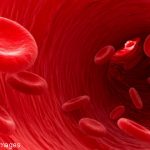Few commercial insurance companies pay for these tests, even considering these superior statistics. I follow approximately 200 patients with SLE. The ancient biomarkers have proven unhelpful in following disease activity in many of them. Once or twice daily, I depend on EC4d to accurately identify SLE activity when anti-dsDNA, C3, and C4 do not reliably fluctuate with disease. Due to insurance non-reimbursements, many patients must pay a greatly reduced out-of-pocket fee (or for free if in a low-income bracket) courtesy of the proprietary lab. This does not cover the cost of performing these biomarker tests nor does it recuperate R&D costs.
Insurance company denial letters list many reasons for CB-CAPS testing noncoverage, including being experimental, not being proved to improve net health outcomes, not being part of SLE classification criteria and not being supported by the ACR.
We predict that CB-CAPS will become widely used and included as standard of care in clinical practice to help diagnose and manage SLE better. In 2024, the CB-CAPS patent expires. At that point, the duopoly can provide the tests on a broad scale, most likely at a much-reduced cost; they do not need to recuperate R&D expenses.
Suppose the original discoverers and producers of biomarkers continue to lose patents due to this system. This will deter others from pursuing biomarker R&D. The giant commercial lab duopoly will most benefit in the long run.
Clinical Utility
The Fryback-Thornbury Hierarchy (FTH) was developed in 1991 to demonstrate diagnostic testing validity and utility.14 CB-CAPS satisfied each FTH level: technical and diagnostic efficacy, diagnostic thinking, therapeutic and patient outcomes, and societal efficacy.15-19
Even with so much support in peer-reviewed journals, CB-CAPS are deemed investigational by sources like UpToDate and not clinically useful by insurance companies. What objective criteria do they require?
UpToDate does not delineate their reasoning. If they were to apply similar standards to the ancient biomarkers, they would also need to label them investigational. For example, UpToDate states that CB-CAPS requires longer duration studies. This standard is not even required of new pharmaceuticals. The ancient biomarkers also lack high-quality, long-term studies other than clinical use over a half-century. Yet UpToDate recommends their use.
Unlike pharmaceutical approvals by the U.S. Food & Drug Administration (FDA), the path to FDA and Centers for Medicare & Medicaid Services (CMS) approval for biomarkers is too long, cumbersome and expensive. For example, CB-CAPS is still waiting on CMS approval even after many studies showing high sensitivity, specificity and predictive value with excellent clinical and societal utility in peer-reviewed journals.

